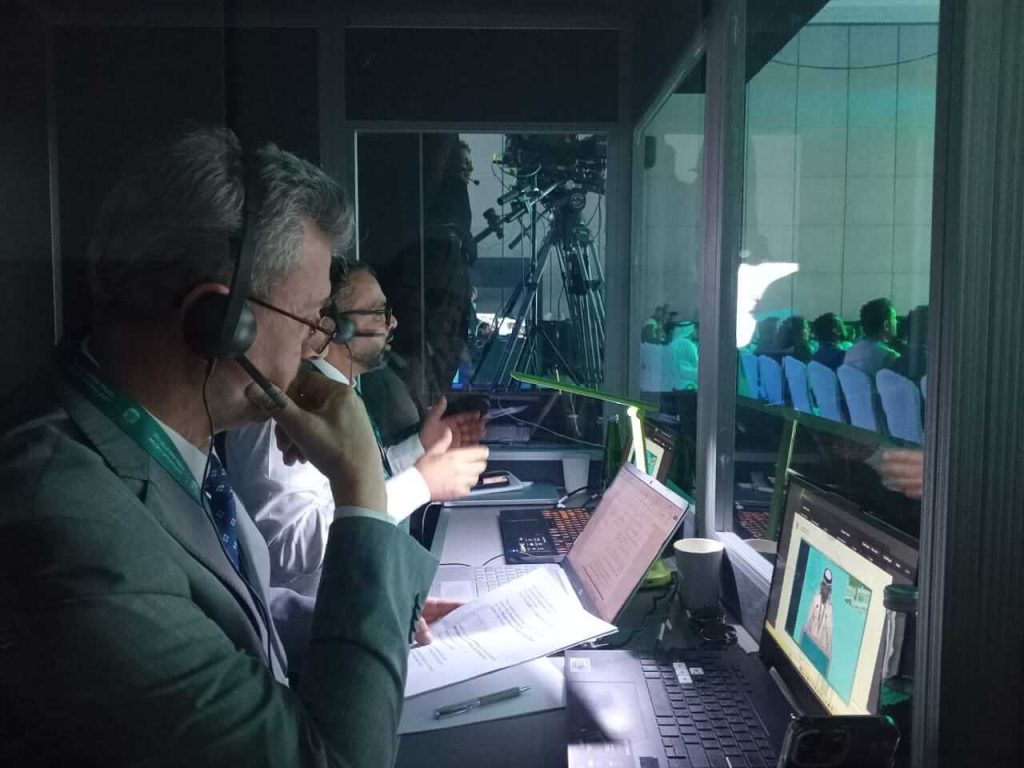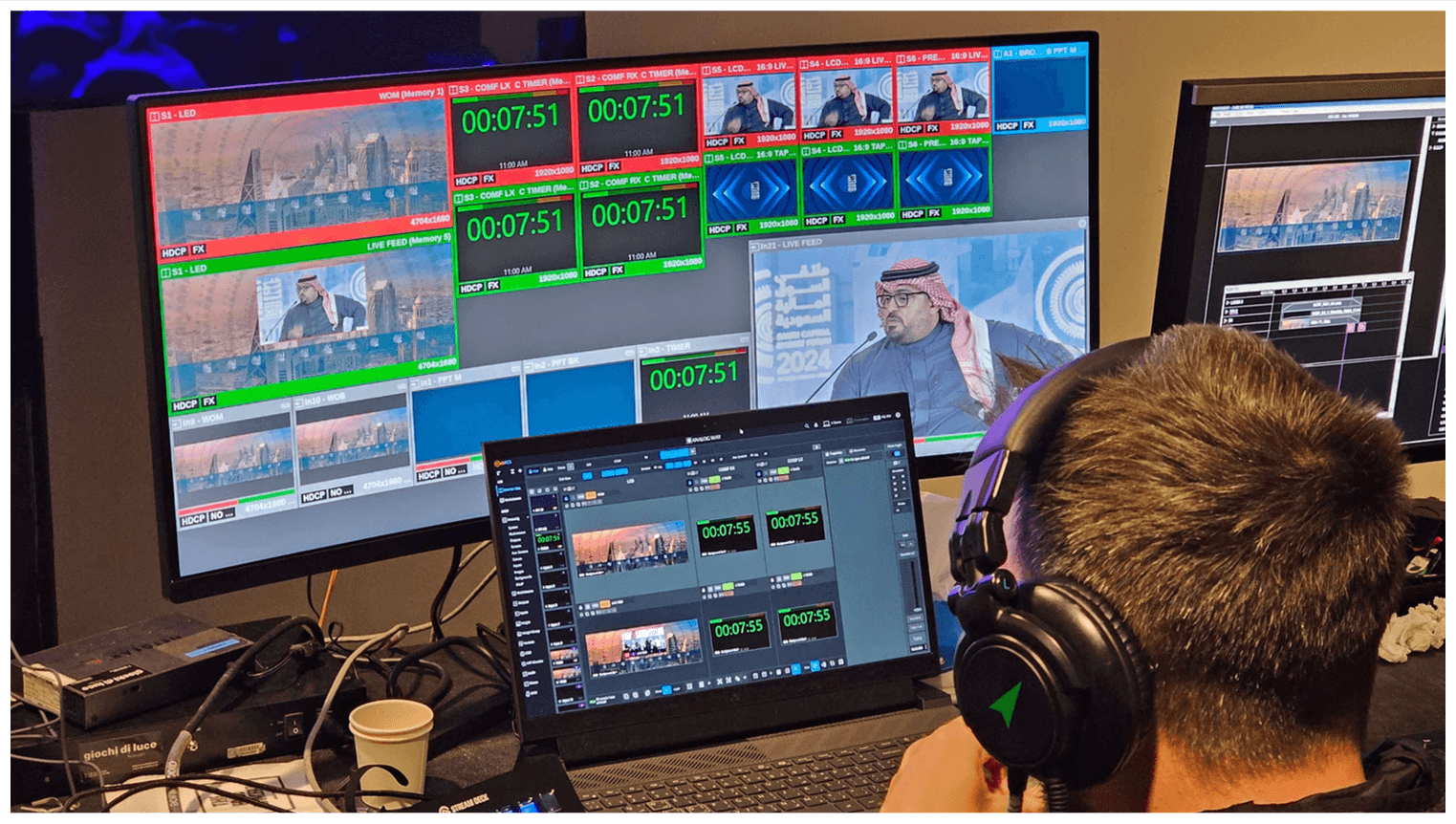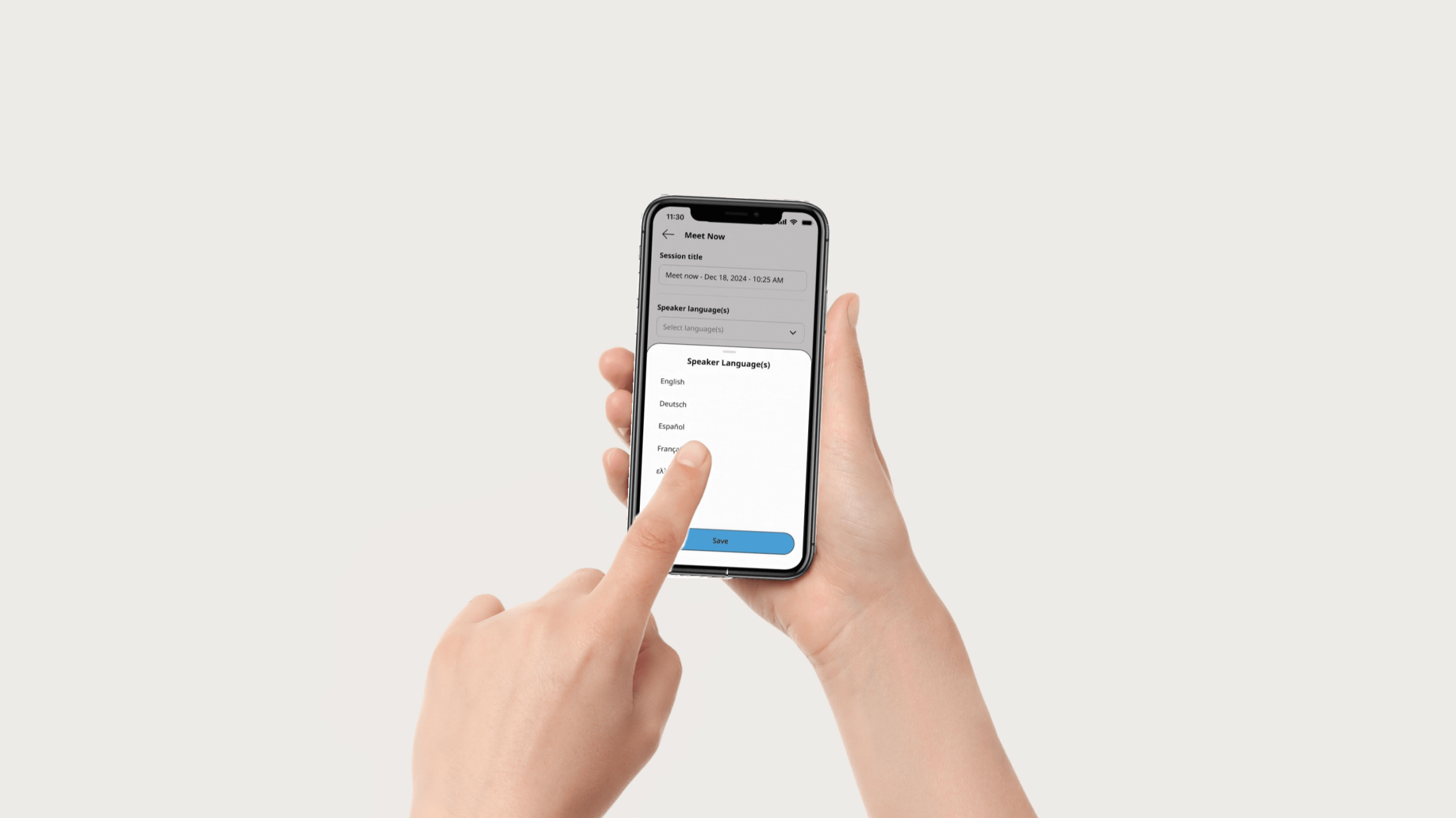Researched and written by Evan – ~5 min read

When planning a multilingual event, one of the most frequent questions is: How much does simultaneous interpretation cost? Whether you’re organizing a hybrid conference in Riyadh or a virtual roundtable in Dubai, knowing what influences the price helps you budget smart and avoid surprises.
Here’s your friendly cost breakdown, simple, practical, and fun to read.
Interpreter Expertise & Experience
Costs vary widely depending on interpreter qualifications:
- Entry-level interpreters typically charge around $300–$500/day
- Mid-level professionals range between $600–$800/day
- Highly specialized or certified interpreters, especially in rare language combinations or technical fields, can command $1,000–$1,200+ per day
Preparation & Subject-Matter Familiarity
Top-tier interpreters spend time before the event reviewing:
- Agendas, speaker bios, and slide decks
- Technical terms and relevant glossary terms
- Industry-specific protocols or legal language
This prep work takes several hours and it is generally included in their daily rate, along with their commuting time to/from the venue.
Equipment & Technical Setup
Depending on your event format, costs vary:
For in-person or hybrid events:
- Interpreter booths : typically $500–700/day or included in venue fees.
- Conference equipment (transmitters, receivers & headsets, setup&strike): approximately $15- 20 per attendee.
- PTZ camera or PTT microphones with AV tech support may add €300–400/day depending on configuration.
For remote simultaneous interpretation (RSI):
- Platforms like Interprefy or KUDO normally cost $500–$1,000 per day with minimal configuration, with fewer hardware needs, making it often more cost-effective. Interpreters’ fees are charged separately.
In fact, RSI can reduce overall interpreter costs by up to 20-30% and minimize logistics-related costs, with equipment expenses going down by 50–60% in some cases. In most cases, RSI results in increased overall quality of the interpretation because the most qualified interpreters can be booked for your event. On the contrary, onsite interpreting service relies on local availability.
Duration and Schedule Details
Interpreters usually bill by the day or half day, with minimum booking times (usually 2–3 hours). For longer events (e.g., multiple days), many providers offer discounted rates that can be more budget-efficient.
Keep in mind:
- In practice, simultaneous interpretation always involves at least two interpreters per language to allow for breaks and ensure sustained quality throughout long sessions.
- Standard rotation for simultaneous interpreters is 20–30 minutes before they switch over, to avoid fatigue.
- Booking one interpreter for a long session may lead to translation quality decreasing over time and potential complaints about inaccuracies and mistranslation.
Language Pair & Complexity
The rarity of language combinations matters:
- Common pairs like English–Spanish or French–Arabic are more affordable.
- Rare or less-common pairs (Japanese–Swahili, Hindi–Scandinavian) come with premium pricing.
- Events with technical content or legal/regulatory themes also call for interpreters with specialized expertise, which can result in higher costs.
Travel, Accommodation & Logistics
When interpreters must travel onsite, additional costs apply:
- Travel expenses (flights, mileage, ground transport)
- Accommodation and potential per diem fees for multi-day events
- Emergency or last-minute changes leading to overtime charges
Some agencies may bundle these; others itemize them separately, so clarify this early in your quote.
Sample Cost Example: What a Simultaneous Day Might Cost
Let’s look at a typical conference onsite in Dubai expecting 100 attendees and requiring English-Arabic interpreting service:
| Cost Item | Estimated Range (USD) |
|---|---|
| 2 interpreters (mid-level) | $1,200–$1,600 |
| Booth | $500–$700 |
| Conference system (headsets&receivers | $1,500–$2,000 |
| Logistics and Technical Support | $300–$500 |
| Estimated Total (Hybrid) | $3,500–$4,800 |
Tips for Cost Optimization
- Bundle services and equipment with one provider (like Langpros) to simplify coordination and reduce overall costs. When you work with a single partner for interpretation, AV equipment, streaming, and technical support, you can often access more competitive package pricing and avoid hidden fees from multiple vendors.
- Book interpreters in advance and supply all relevant documents early. This reduces rush fees and improves quality.
- For low-demand language pairs, consider relay interpreting using a common pivot language (like English or French) to reduce the number of interpreters needed.
- Know your attendees: standard setup and equipment are generally recommended for high-profile events with government representatives or VIPs. Instead, a tech conference gathering experts who share insights on current trends may call for a more informal setup with remote interpreting delivered via the attendees’ smartphones.
- Limit interpretation to essential sessions.
- For hybrid events, remote interpreting (RSI) setups can dramatically reduce equipment and travel costs, without sacrificing quality.
- Speak with your provider about multi-event discounts, many vendors offer preferred rates for long-term or repeat collaborations.
Final Thoughts
While it may seem expensive at first glance, simultaneous interpretation is an investment in clarity, engagement, and professionalism. The right setup ensures attendees, both in-room and online, feel heard and understood, no matter the language.
So next time you plan a multilingual meeting, use this breakdown to request quotes with confidence, ask the right questions, and choose the best-fit solution for your budget and event needs.
Want help estimating costs for your specific conference? Langpros is here to help, just reach out for a free & tailored quote!





